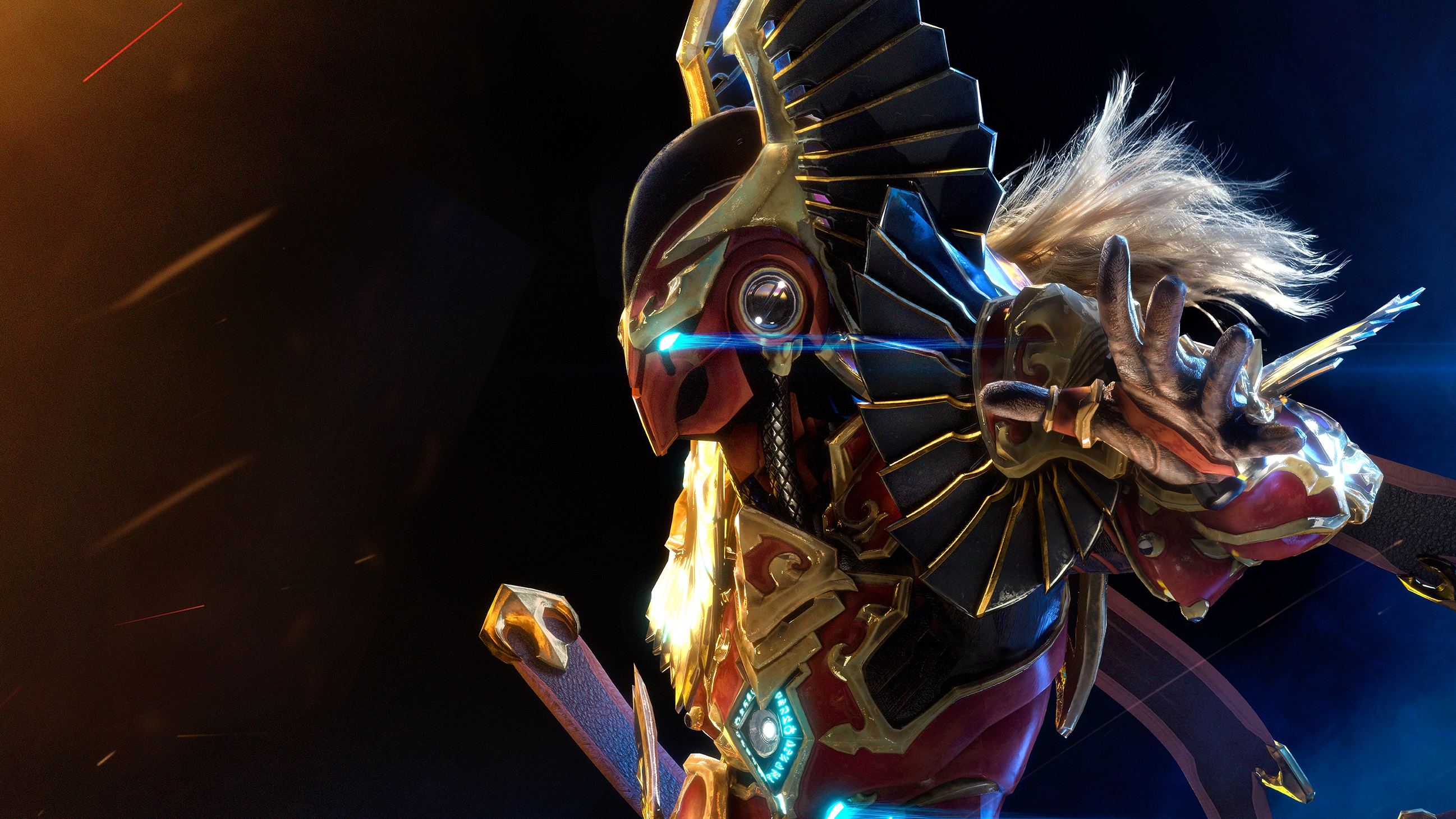Brace yourself for ray tracing in new games being AMD or Nvidia exclusive
Godfall is only supporting AMD ray tracing at launch, hinting at the next exclusive feature in the AMD vs. Nvidia battle.

When Nvidia launched its RTX graphics cards in 2018, it made sense that ray tracing was essentially an Nvidia-exclusive feature—without dedicated ray tracing GPU cores, AMD's graphics cards at the time couldn't do ray tracing themselves. Now that AMD's new RX cards have launched with ray tracing, it should theoretically be an even playing field. But instead of ray tracing becoming a hardware-agnostic feature, it looks like it might be a new exclusive feature used to sell more graphics cards, just like Nvidia's popular DLSS anti-aliasing.
Case in point: On Wednesday, Godfall developer Counterplay Games released a patch that enables ray tracing, but only for AMD GPUs. Godfall is an AMD partner game, which means it flashes a "best on AMD" logo before the title screen and that the developers and AMD worked closely together to make the game run as well as possible on AMD hardware.
Nvidia and AMD commonly use these partnerships to help their cards eke out an advantage in benchmarks, and working with developers on exclusive features that showcase how much better the game looks on their hardware. This has been going on for years; Nvidia's fancy PhysX physics and AMD's "ooh, pretty hair" TressFX are some early examples.
Update 2.0.95 has just been deployed to the PC version of Godfall and is now available for users to download. This update enables ray tracing while using applicable AMD GPUs.📝 https://t.co/X3p7LRdgbc pic.twitter.com/7l36lig4IvNovember 18, 2020
In Godfall's case, ray tracing support isn't exclusive to AMD hardware. "Ray tracing using NVIDIA GPUs will come with a future update," the developer's patch notes say. But for how long?
It seems likely that for AMD- and Nvidia-partnered games, ray tracing will be a launch feature on one GPU, and not quite such a big priority for the other. Developers only have so much time, after all, and ray tracing still isn't an essential feature. Based on the October Steam hardware survey, only 11.3% of PC gamers own RTX 20 series GPUs. RTX 30 series cards aren't on the survey at all, but based on the ongoing shortages, they aren't likely to increase that figure by more than a couple points.
But if AMD or Nvidia is partnering with a game developer, it makes sense that they'd want that game to look as good as possible, and that will likely include ray tracing as a showcase feature.
In 2020 and 2021, AMD's "featured games" include Godfall, Far Cry 6, Assassin's Creed Valhalla, and Horizon Zero Dawn. Nvidia has Watch Dogs Legion, Call of Duty: Cold War, Minecraft and big gun Cyberpunk 2077.
Keep up to date with the most important stories and the best deals, as picked by the PC Gamer team.
Nvidia certainly has a head start here, with RTX established as the only PC ray tracing tech for the last two years. AMD may be able to play catch-up quickly with its ray tracing hardware embedded in the PlayStation 5 and the Xbox Series X and the popularity of its Zen CPUs. And there will still be many games that don't go with either partner program; we can hope they'll support device-agnostic ray tracing rather than one or the other.
But I'm worried that the more common situation next year will be what we see with Godfall—ray tracing that's exclusive for at least a while, with no way for players to predict which GPU manufacturer a developer will side with. The more excited you are about playing a game at launch, the more likely this is to sting.
Update 11/19: After this article was posted, an Nvidia representative reached out to stress that Nvidia "is not pushing proprietary ray tracing features in any games." As I wrote above, AMD and Nvidia both have a history of introducing technology that exclusively works on their graphics cards. Right now, Nvidia is adamant that ray tracing won't follow that path:
"We support all industry standard APIs, including Microsoft DXR and the upcoming Vulkan RT, which is not yet released. The vast majority of games released with ray tracing support use the industry standard Microsoft DirectX Ray Tracing (DXR) API. Three exceptions we are aware of include Quake II RTX, Wolfenstein: Youngblood, and JX3, which use NVIDIA ray tracing extensions for Vulkan. But those extensions are necessary to get the standard released, and other venders can choose to support the NVIDIA extensions or not. They are not ‘proprietary’. Quake II RTX and Wolfenstein YB utilize our Vulkan extensions since Vulkan RT is not out yet. AMD could write extensions for Vulkan if they wanted to spend the resources doing so. Once Vulkan RT is publicly ready, we would have no reason to use extensions and we will move to Vulkan RT."

Wes has been covering games and hardware for more than 10 years, first at tech sites like The Wirecutter and Tested before joining the PC Gamer team in 2014. Wes plays a little bit of everything, but he'll always jump at the chance to cover emulation and Japanese games.
When he's not obsessively optimizing and re-optimizing a tangle of conveyor belts in Satisfactory (it's really becoming a problem), he's probably playing a 20-year-old Final Fantasy or some opaque ASCII roguelike. With a focus on writing and editing features, he seeks out personal stories and in-depth histories from the corners of PC gaming and its niche communities. 50% pizza by volume (deep dish, to be specific).

